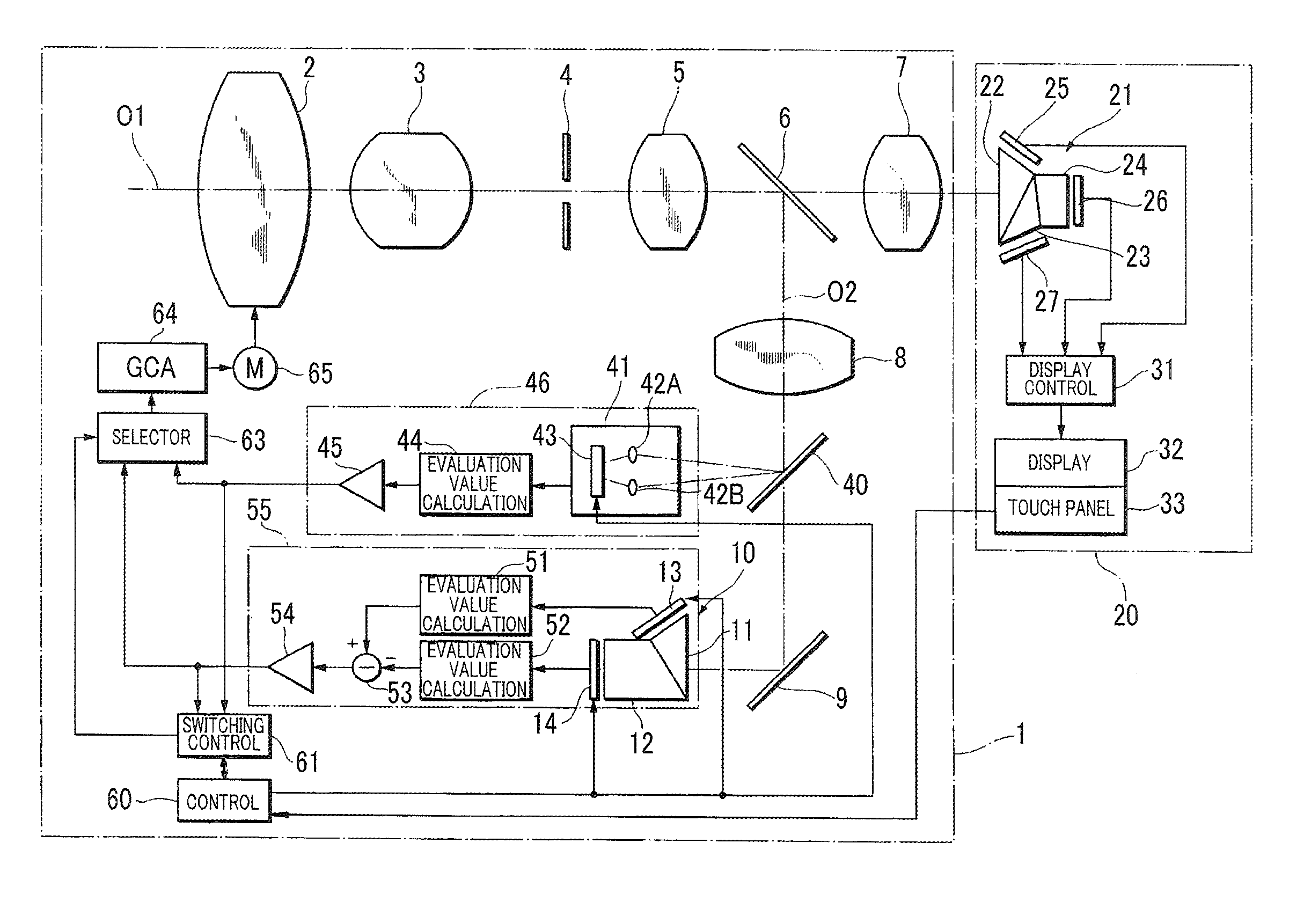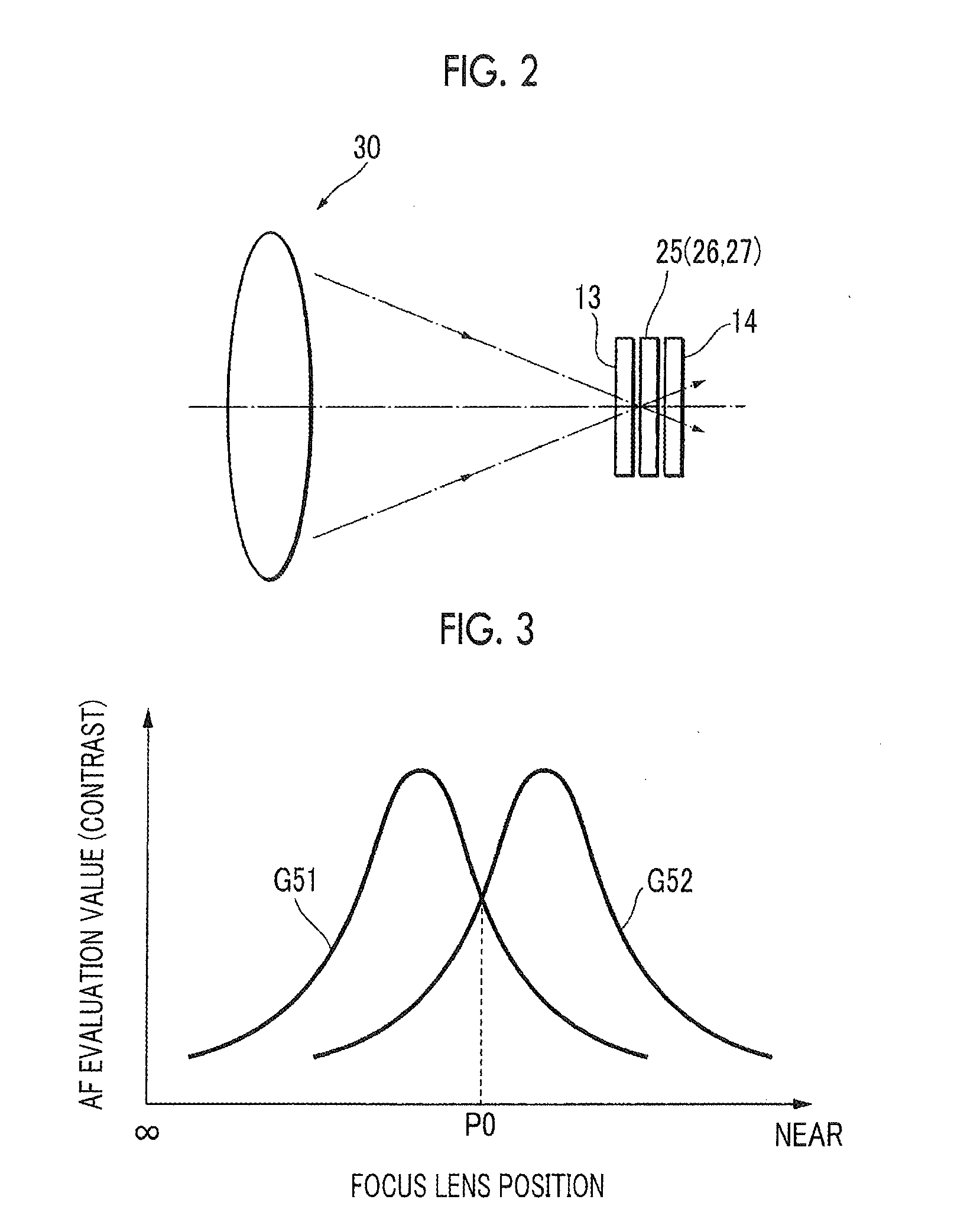Auto-focus device and method for controlling operation of same
- Summary
- Abstract
- Description
- Claims
- Application Information
AI Technical Summary
Benefits of technology
Problems solved by technology
Method used
Image
Examples
Embodiment Construction
[0033]FIG. 1 shows an optical configuration of a part of a camera main body 20 and a photography lens unit 1 used for broadcast according to an example of the invention.
[0034]The photography lens unit 1 is detachably mounted on the camera main body 20.
[0035]The photography lens unit 1 includes a focus lens (focus lens group) 2, a zoom lens (zoom lens group) 3, a front relay lens (front relay lens group) 5, and a rear relay lens (rear relay lens group) 7 each of which has an optical axis which is the same as an optical axis O1 of the photography lens unit 1. A diaphragm 4 is disposed between the zoom lens 3 and the front relay lens 5 such that the optical axis O1 of the photography lens unit 1 passes through the center. Further, a half mirror 6 is disposed between the front relay lens 5 and the rear relay lens 7.
[0036]The camera main body 20 is provided with a color separation prism 21 that has an optical axis the same as the optical axis O1 of the photography lens unit 1 when the ph...
PUM
 Login to View More
Login to View More Abstract
Description
Claims
Application Information
 Login to View More
Login to View More - R&D
- Intellectual Property
- Life Sciences
- Materials
- Tech Scout
- Unparalleled Data Quality
- Higher Quality Content
- 60% Fewer Hallucinations
Browse by: Latest US Patents, China's latest patents, Technical Efficacy Thesaurus, Application Domain, Technology Topic, Popular Technical Reports.
© 2025 PatSnap. All rights reserved.Legal|Privacy policy|Modern Slavery Act Transparency Statement|Sitemap|About US| Contact US: help@patsnap.com



